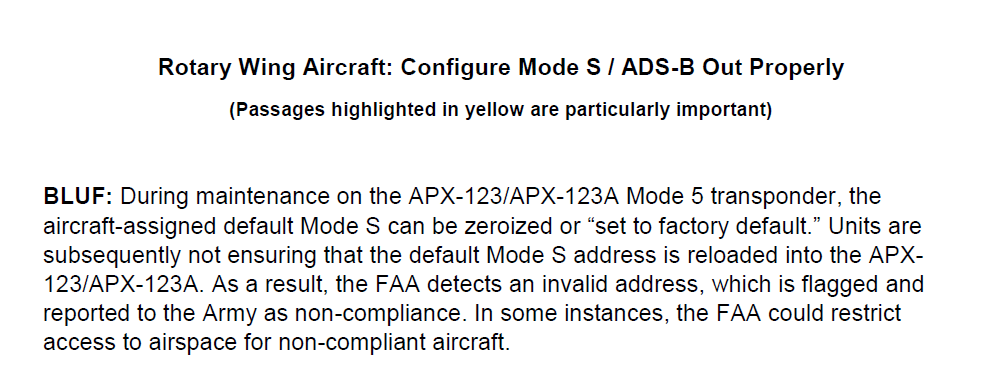Mechanics,
During maintenance on the APX-123/APX-123A Mode 5 transponder, the aircraft-assigned default Mode S can be zeroized or “set to factory default.” Units are subsequently not ensuring that the default Mode S address is reloaded into the APX-123/APX-123A. As a result, the FAA detects an invalid address, which is flagged and reported to the Army as non-compliance. In some instances, the FAA could restrict access to airspace for non-compliant aircraft. Worse still, unless this ongoing problem is corrected, the FAA could cause HQ DA to exact penalties from units that fail to comply with the guidance in this article.
The attached PDF spells out what you need to know. It explains the following:
- The difference between the aircraft-assigned default Mode S and the factory default.
- The difference between default Mode S and operational Mode S.
- The need to reload the aircraft-assigned default Mode S any time the aircraft system processors are replaced or a new aircraft OFP software is loaded.
- The difference between the Mode S address and the Mode S Flight ID.
- The fact that the APX-123/APX-123A does not retain the aircraft-assigned and loaded default Mode S address in the transponder; it is retained in the aircraft system processors.
- Avoiding the use of duplicate Mode S among aircraft.
If you have questions, the POCs are listed at the end of the PDF and can be reached through the Outlook global address list.
To access the PDF, click on the image below:
 Click on image above to view and download PDF
Click on image above to view and download PDF